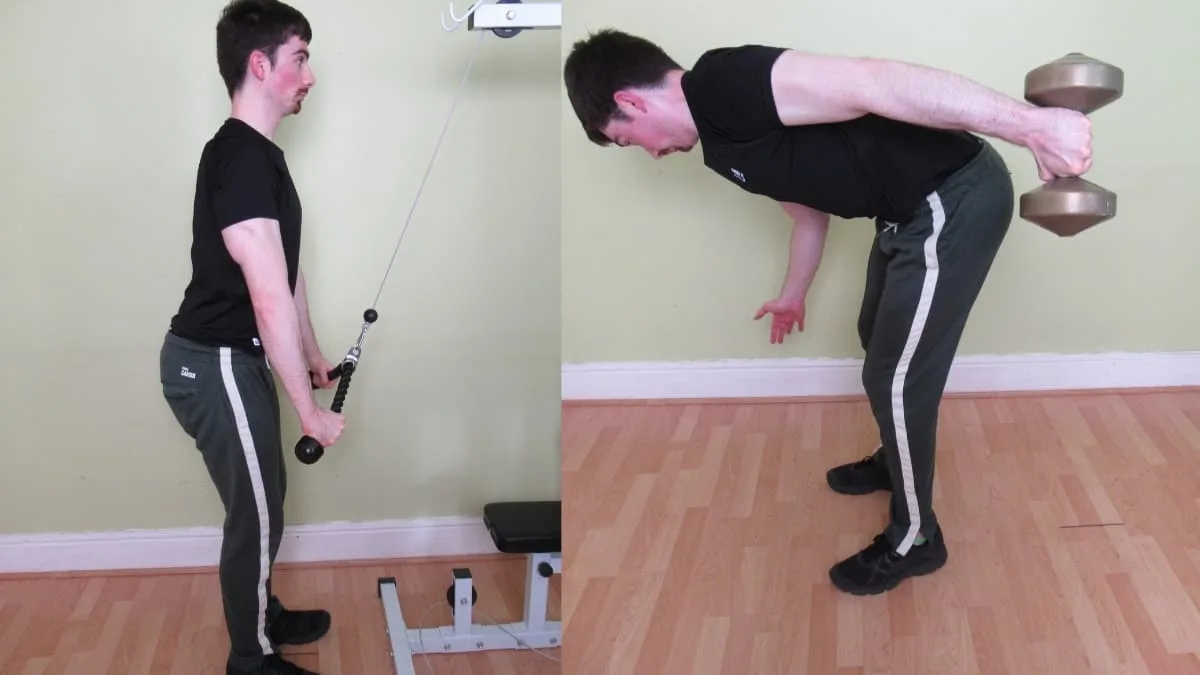Learning how the triceps muscles function helps you to select better exercises and improve your results in the gym.
For example, since only the long head of the triceps acts on the shoulder joint, it’s crucial to perform a tricep extension alternative where your shoulders are in flexion if you want to achieve optimal gains.
But if overhead extensions cause you discomfort or if you don’t have the necessary equipment to perform them, then it’s time to look for alternatives.
In addition to discussing the best cable overhead triceps extension alternative, this guide suggests plenty of good substitutes for free weight and lying extensions as well.
So whether you’re experiencing tricep extension elbow pain or shoulder pain when doing tricep extensions, you’ll be able to find a replacement exercise that doesn’t hurt your joints.
Related: Rope overhead tricep extension
Tricep extension alternatives
Learn the pros and cons of each cable lying triceps extension alternative by checking out these muscle-building movements.
1. Lying tricep extension
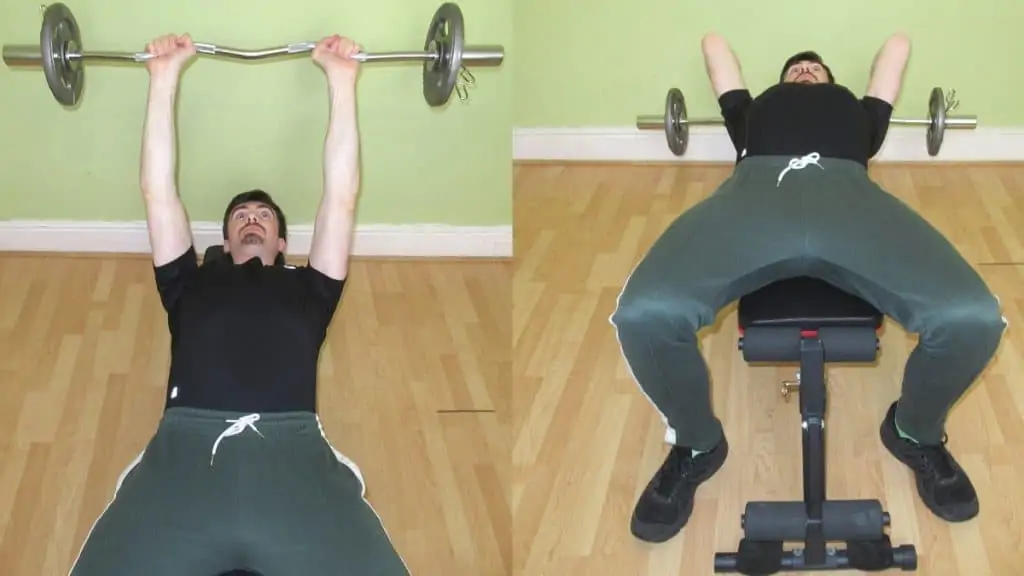
The flat bench triceps extension is an excellent skull crusher alternative because you’re bringing the bar behind your head rather than lowering it to your face.
This modified bar path helps to reduce the strain that gets put on your elbows while simultaneously placing the long head of your triceps under a more substantial eccentric stretch.
Using an EZ also keeps your wrists out of trouble because these cambered bars have semi-pronated grips, which are much more comfortable to hold than a straight barbell.
The lying extension also puts less stress on your shoulders than overhead extensions because it doesn’t force your shoulders into maximum flexion, a position that can strain the rotator cuffs.
The only downside of lying tricep extensions is that the exercise requires a bench, which isn’t ideal if you’re training at home and/or don’t have much gym equipment at your disposal.
Nevertheless, lying extensions, which are also a great exercise to replace tricep dips, are the number one dumbbell overhead triceps extension alternative because they enable you to overload your triceps with more resistance than any other isolation exercise, a quality that’s indispensable when it comes to hypertrophy.
2. Cable lying tricep extension
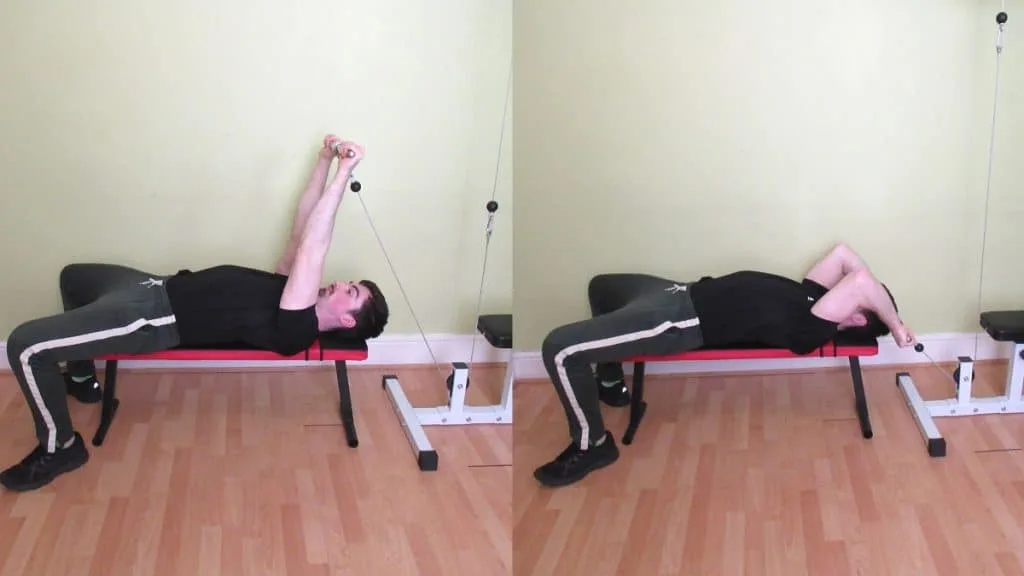
Cable lying tricep extensions are a great alternative for overhead rope extensions because they keep your shoulders in a much lower degree of flexion, which in turn reduces the strain on your rotator cuffs.
Cable lying extensions also enable you to bring the attachment behind your head to reduce the pressure on your elbows—all while giving your triceps a better stretch.
Using the rope attachment is most recommended because you can “split” the ends of the rope to achieve a stronger peak contraction.
Additionally, you have to lock out each end of the rope separately, which ensures that both of your triceps are receiving similar amounts of work.
While lying cable extensions certainly require a lot of equipment, they’re a remarkably joint-friendly exercise because they require less stabilization than free weight equivalents.
This means that your triceps muscles, more so than your connective tissue structures, have to do the heavy lifting.
3. JM press
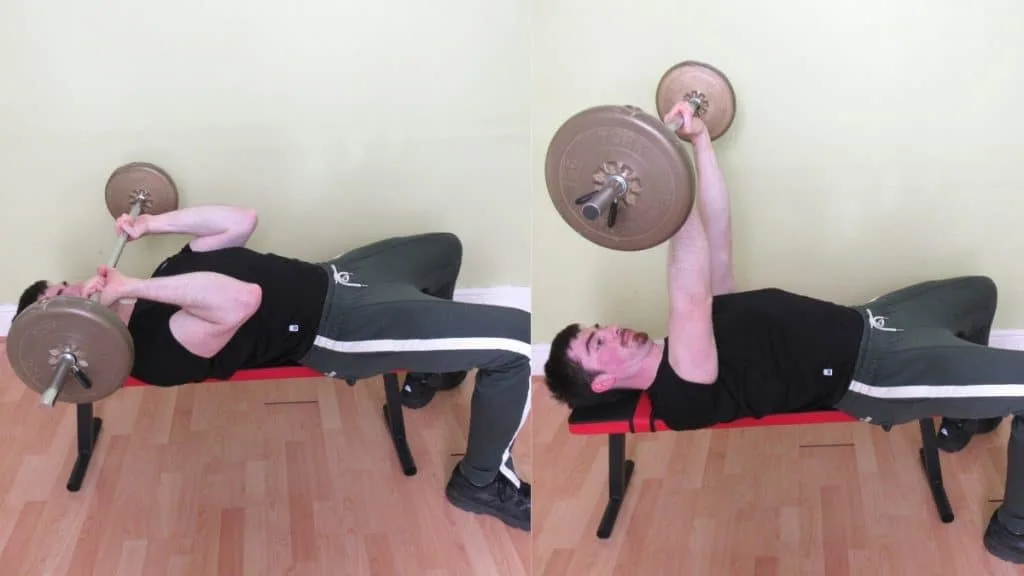
Besides boosting your bench press lockout, the JM press is also an excellent tricep extension alternative for hypertrophy.
The movement combines a close grip bench press and a tricep extension into one of the most effective hybrid exercises ever created.
The narrow grip keeps your chest out of the movement while making your triceps bear the brunt of the load. But because your shoulders are involved during the concentric phase of the rep, you’re able to lift far more weight than you otherwise could in a regular tricep extension.
Being able to lift heavier while isolating your triceps during the eccentric portion of the rep is the dream hypertrophy scenario because, as fast-twitch-fiber-dominant muscles, the triceps grow exceptionally well from heavy, low rep lifting.
4. Tricep pushdowns
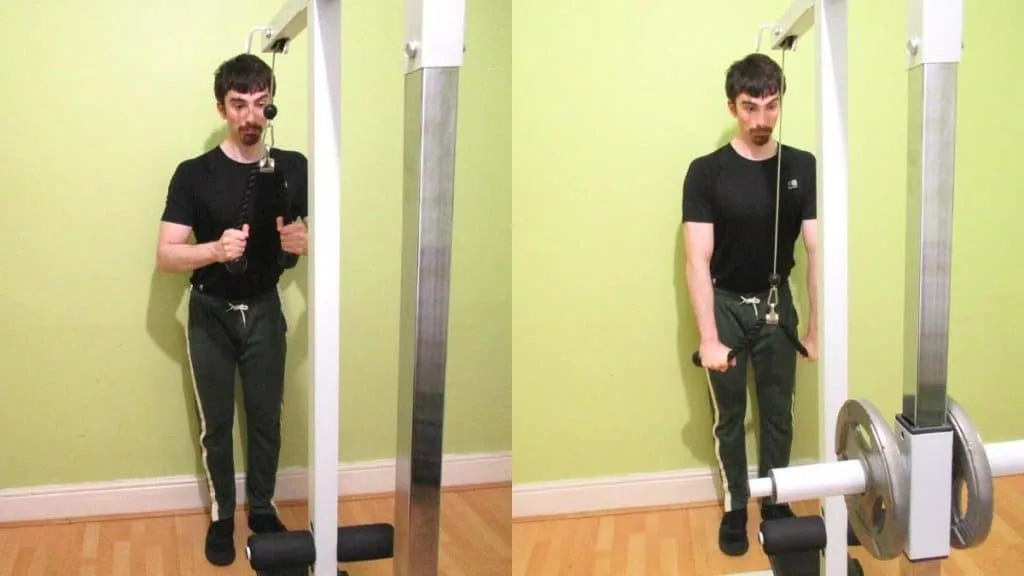
Tricep pushdowns are an excellent cable tricep extension alternative because your arms are in front of your body rather than over your head. This places your shoulders in a more comfortable position (which is to say, in a lower degree of flexion) while sparing your elbows from excessive torque.
Although you can lift plenty of weight on pushdowns, you also can’t rely on them as a direct replacement for overhead extensions because pushdowns don’t train the long head of the triceps optimally.
To work the long head properly, you need to put your shoulders into flexion, which almost always involves doing some kind of lying or overhead extension.
Nonetheless, pushdowns are a proven mass-building movement that virtually every weight lifting enthusiast performs on a regular basis. They isolate your triceps, provide joint-friendly, constant cable tension, and also enable you to lift serious amounts of weight.
Check out our tricep extension vs pushdown comparison to learn more about the differences between these two popular exercises.
5. Bench dips
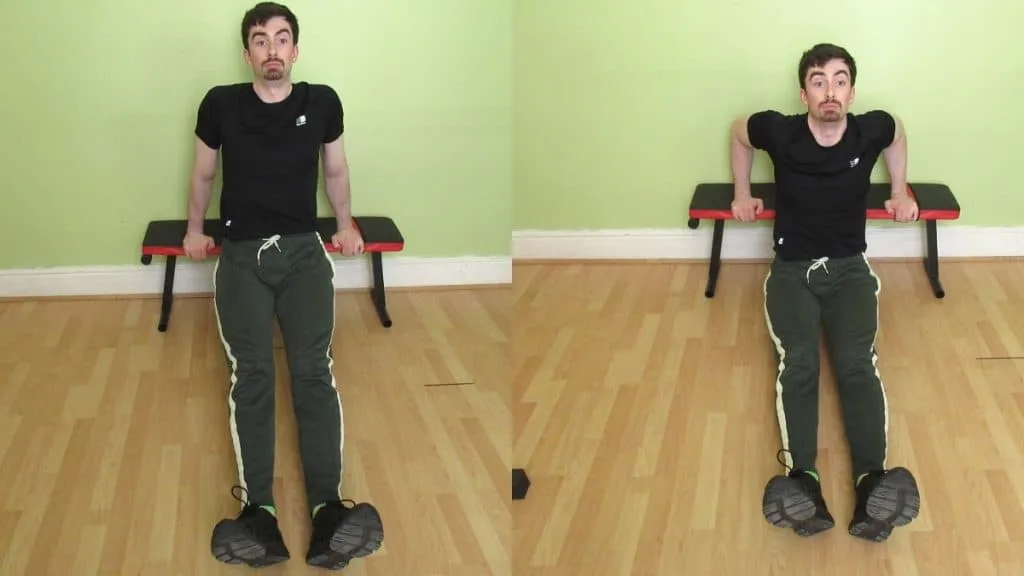
Bench dips are an accessible exercise that you can do almost anywhere. If you don’t have access to a weight bench, then you can do dips off the edge of your sofa or by using a chair.
Due to their small range of motion, dips are especially effective when performed for high reps because doing high repetitions enables you to challenge your triceps with plenty of time under tension.
Tension is ultimately what every muscle responds to (muscles don’t understand what ‘weight’ is).
So even though bench dips don’t place the long head of your triceps under much of a stretch, they make up for it to an extent by pumping up your triceps with plenty of training volume, which is the primary driver of muscle growth.
Just make sure that you don’t let your shoulders round forward during bench dips.
Besides taking tension off your triceps, letting your shoulders round forward puts a frightening amount of stress on your rotator cuffs, so try and keep your shoulders in external rotation while you perform tricep dips.
6. Parallel bar dips
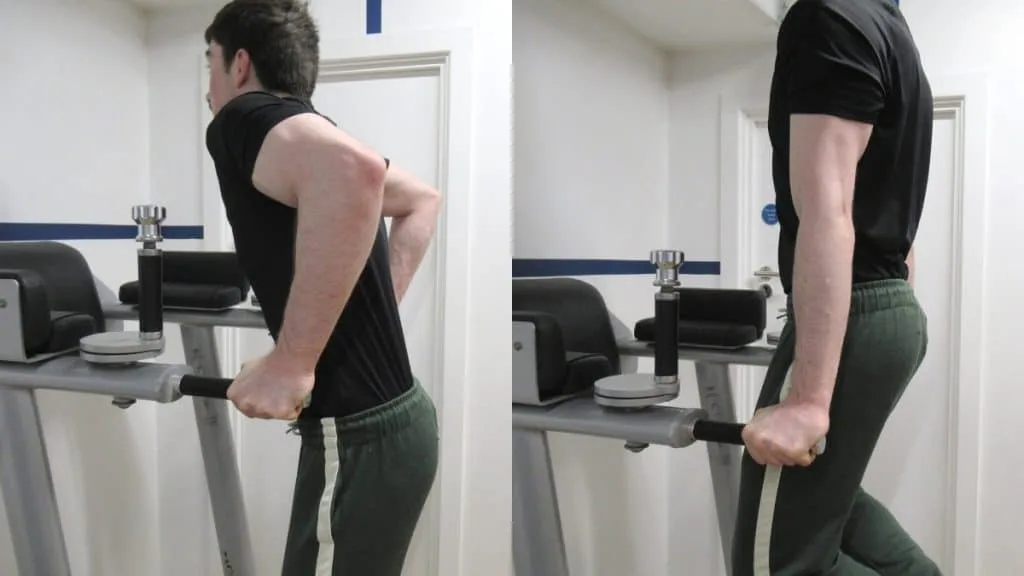
Parallel bar dips are a mass-builder for the triceps, if there ever was one. But to keep the focus of the exercise firmly on your triceps, you need to make a few form adjustments so that your chest doesn’t take over.
Keep your body in an upright position and tuck your elbows close to your sides to make your triceps do most of the work.
Then, when you dip down, don’t go as low as you would during a chest dip. When your torso is in an upright position, your front delts can’t contribute as much force to the movement.
As such, if you dip too low, then your shoulders will actually round forward and cause your rotator cuffs to feel strained.
Upright dips are a great, size-gaining alternative to barbell and dumbbell tricep extensions because they’re highly conducive to progressive overload.
You can increase the resistance in manageable increments by attaching weight plates to a dipping belt, which in turn enables you to gain triceps strength on a regular basis.
Make sure to read our tricep extensions vs dips comparison to learn which of the two exercises is optimal for building your triceps.
7. Diamond push-ups
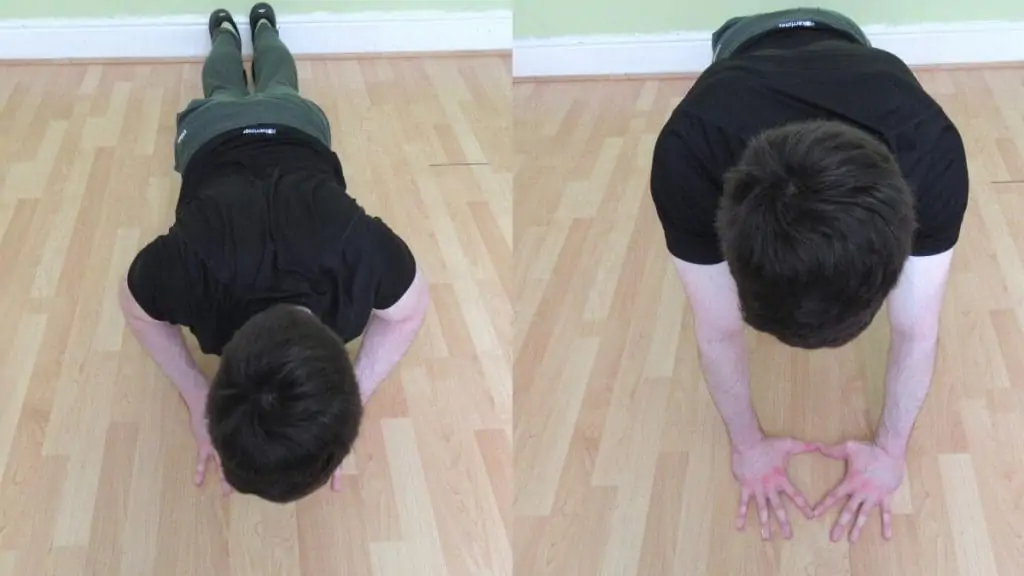
Diamond push-ups are the most accessible alternative to overhead rope extensions because you don’t need to go to a gym to do them.
In fact, diamond push-ups require nothing other than your body weight, which means that you can perform them virtually anywhere.
In addition to taxing your triceps with plenty of resistance, diamond push-ups also challenge your core muscles and front delts, which means that they have excellent carryover to free weight compound presses.
For maximizing your triceps development, however, your best bet is to do diamond push-ups in addition to some kind of extension rather than as a direct replacement. This is so for two reasons.
One, diamond push-ups don’t put the long head of the triceps (the biggest head) under a deep enough eccentric stretch to maximize hypertrophy.
Two, it’s hard to add external resistance to diamond press-ups unless you have a weighted vest or a training partner to put a weight plate on your back.
As such, once you can already do multiple sets of 20-30 reps, you’re likely improving your muscular endurance rather than your muscle size (though bodyweight push-ups are still excellent for maintaining your muscle mass).
8. Tricep kickbacks
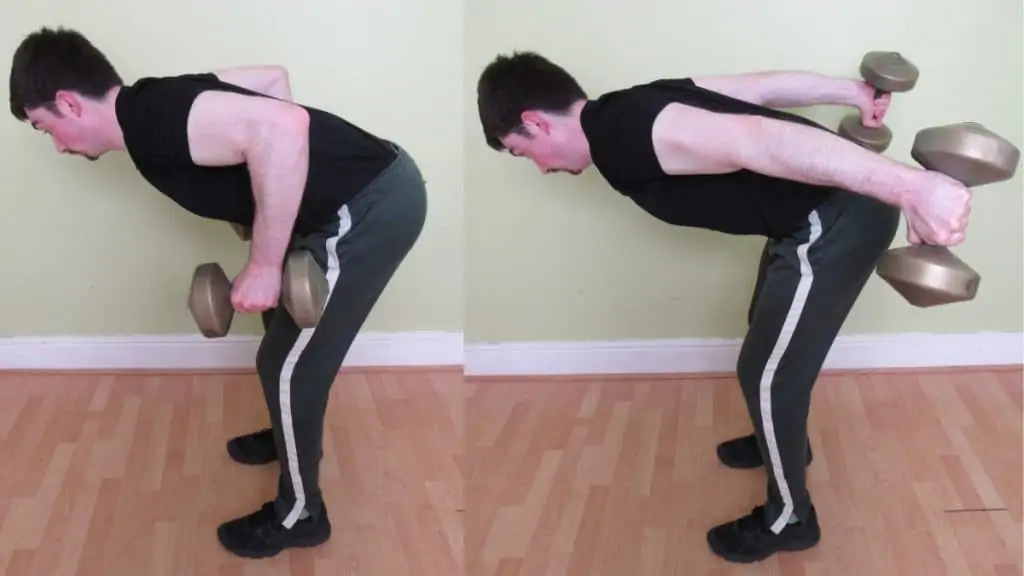
While tricep kickbacks don’t enable you to lift as much resistance as tricep extensions, they do train your triceps in their maximally contracted position, which, for most lifters, provides a novel stimulus.
When a muscle is highly contracted, it’s not capable of producing much force, which is why you have to lift so light on kickbacks.
The trade-off, however, is an eye-wateringly intense peak contraction. But in order to get this peak contraction, you need to keep your elbows and shoulders above your back so that your triceps are under direct tension when your elbows reach full extension.
You’re also best off sticking to high reps so that you can maintain good lifting technique. When you lift too heavy on kickbacks, there’s always a tendency to use momentum to cheat the weights up.
Lifting lighter weights for higher reps, on the other hand, enables you to establish a stronger mind-muscle connection with your triceps to ensure that they’re doing the majority of the lifting.
Yes, there’s a lot more to hypertrophy than just having a good mind-muscle connection. But since you’re not going to be gaining much strength on kickbacks anyway, it’s best to use them as a burnout or “pump” exercise in addition to your heavy presses and extensions.
9. Close grip bench press
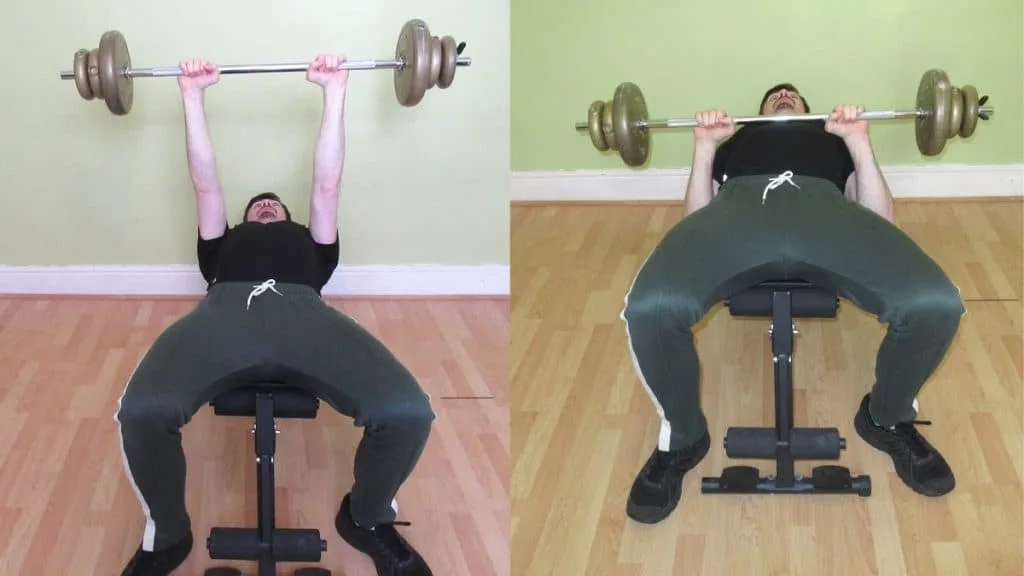
If there’s one exercise that can rival the overhead extension in the mass-building department, it’s the close grip bench press.
By keeping your elbows close to your sides during the press, your chest won’t be able to produce as much force, which means that your triceps have to take over the reins and do the heavy lifting.
Your front delts will still be active, especially if you lower the bar all the way down to your chest, but this is actually a good thing because having your shoulders to help out enables you to lift heavier and thus overload your triceps with more resistance.
And besides, can you ever have shoulders that are too big as a natural lifter? I don’t think so.
How to pick a good tricep extension alternative
There’s no one best tricep extension alternative for every lifter. Your equipment availability, gym goals, and joint health determine which replacement exercises are right for you.
Equipment availability
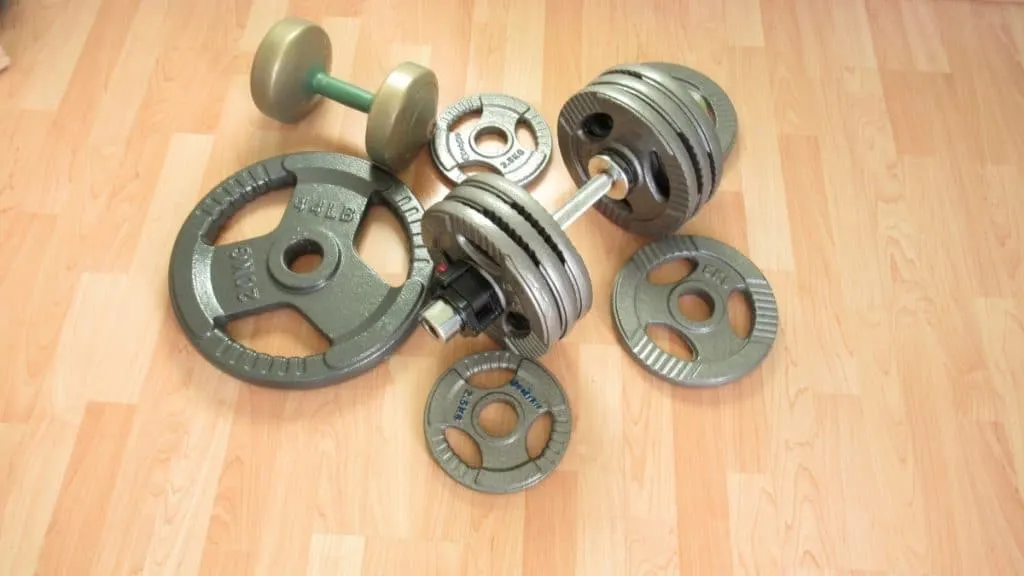
If you don’t have much equipment and are working out at home, then you’ll need to stick to basic tricep extension substitutes like bench dips, diamond push-ups, and, if you have some dumbbells, lying tricep extensions.
On the other hand, if you have access to a weight room, then you should select the exercises that best align with your training goals.
Or perhaps you have access to free weights but not cables. In this case, the ideal cable overhead triceps extension alternative would be some kind of lying or overhead extension performed with a dumbbell or barbell.
This is because free weight extensions have the same movement pattern as cable extensions; the only difference is that cable extensions tax your triceps with constant tension and also tend to be more elbow-friendly than free weight extensions.
Training goals
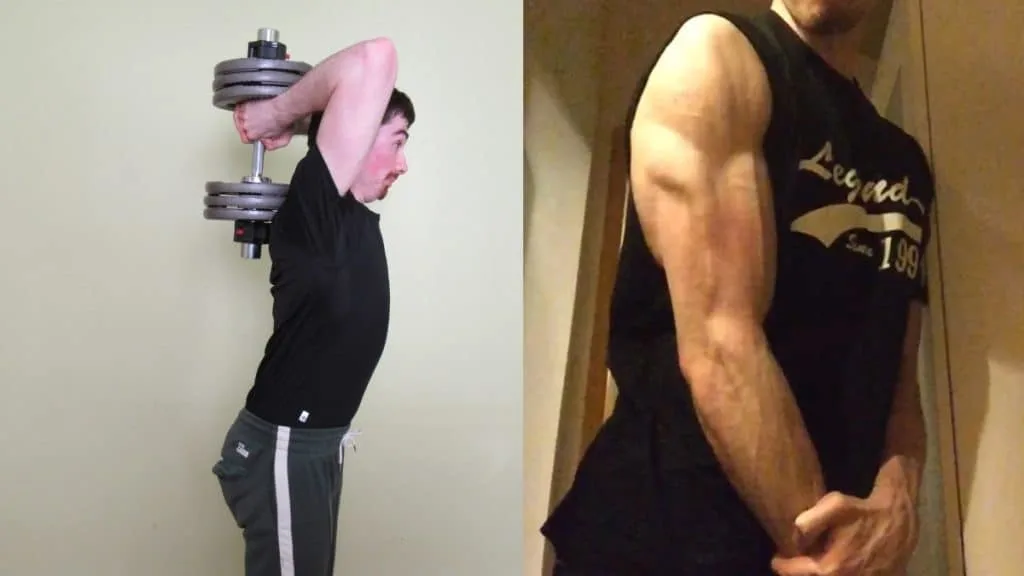
If you’re training for maximum hypertrophy, then there are no two ways about it; you need to do at least one exercise that places your shoulders into a high degree of flexion.
This is because only the largest head of the triceps (the long head) crosses the shoulder joint.
So in order to develop your triceps to their full potential, you have to place the long head under a growth-stimulating eccentric stretch, which requires your shoulders to be in flexion, and thereby your arms to be over your head while you’re either lying or standing up.
On the other hand, if you want to get good gains but aren’t concerned with absolutely maximizing hypertrophy, then you can still get great triceps growth by performing a selection of the recommended alternatives.
Pick exercises that you enjoy doing and can stick to performing on a weekly basis. Training your triceps only leads to muscle growth if you work out consistently.
And while overhead extensions are certainly one of the better exercises, there’s no point doing them if you dread the movement or if it causes you pain.
Build and bone structure
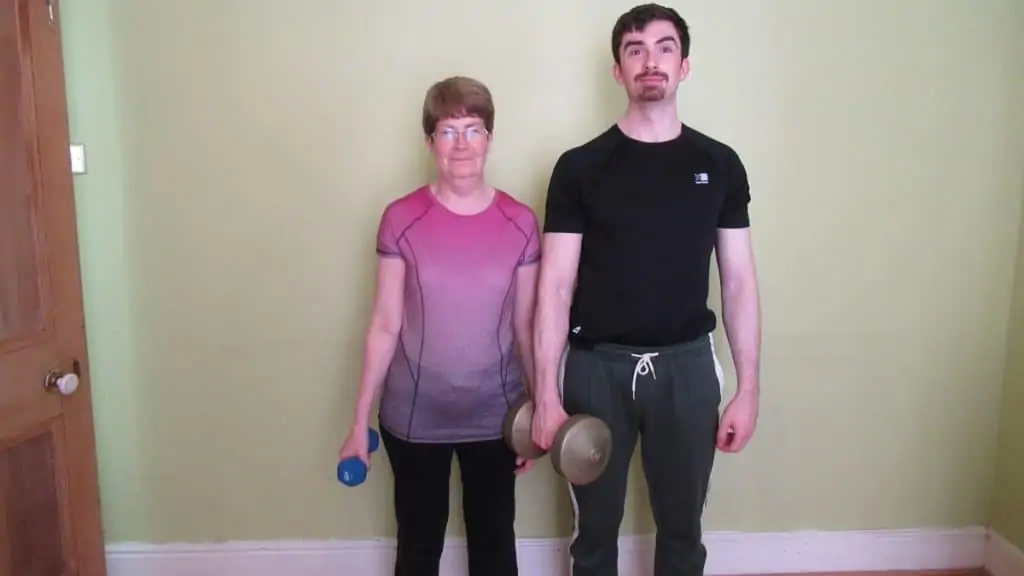
Some people simply don’t respond well to certain tricep movements.
For example, lying extensions can often cause elbow pain if you lower the bar to your face instead of bringing it behind your head.
Similarly, overhead extensions put your shoulders into maximum flexion and can strain your rotator cuffs if you train through the discomfort.
So even though the likes of pushdowns and bench dips might not be optimal exercises for developing the triceps (when performed by themselves), such alternatives are better than doing no exercise at all.
You can compensate for the reduced long head stimulation to an extent by performing more training volume, which, as mentioned, is the primary driver of hypertrophy.
Read More: Rope pressdown alternative│Close grip bench press substitute
Conclusion: What’s the best cable overhead triceps extension alternative?
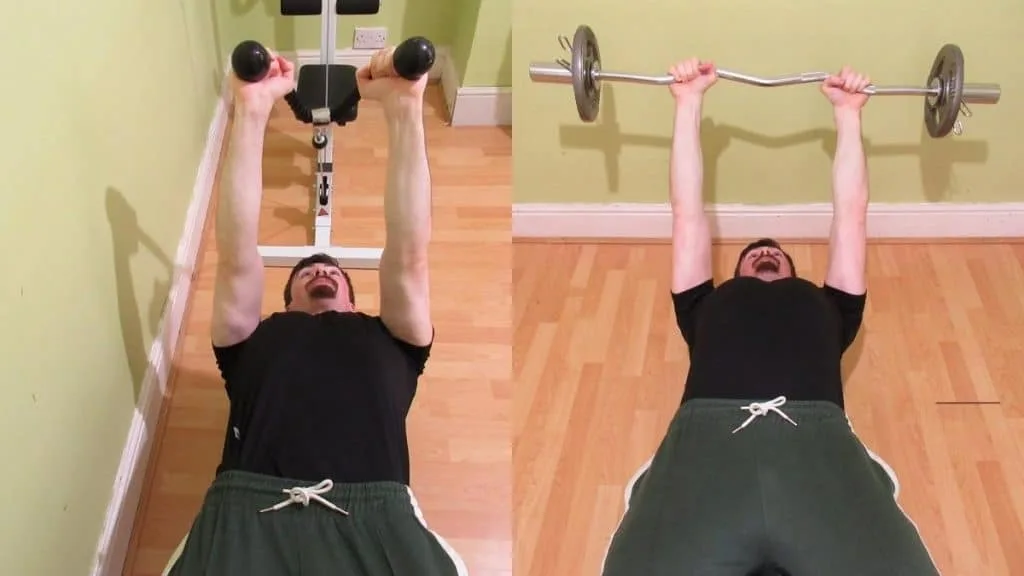
The best cable overhead triceps extension alternative is the free weight overhead extension because it most closely resembles the cable overhead extension.
Free weights are also much more affordable than cable machines (and way less bulky). So if you train at home, it usually makes sense to stick with barbell and dumbbell exercises because then you’re not stuck for workout options if you can’t get to the gym.
If these free weight exercises bother your shoulders or elbows, however—or if you just don’t have access to weights—then your best bet is to perform bodyweight drills like tricep dips and diamond push-ups, both of which require zero gym equipment.

